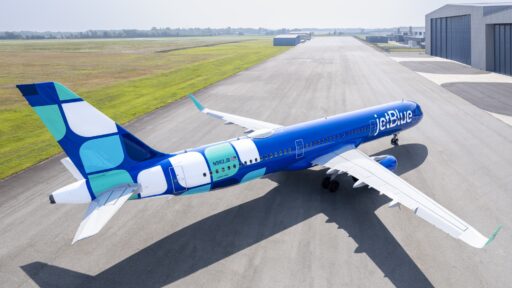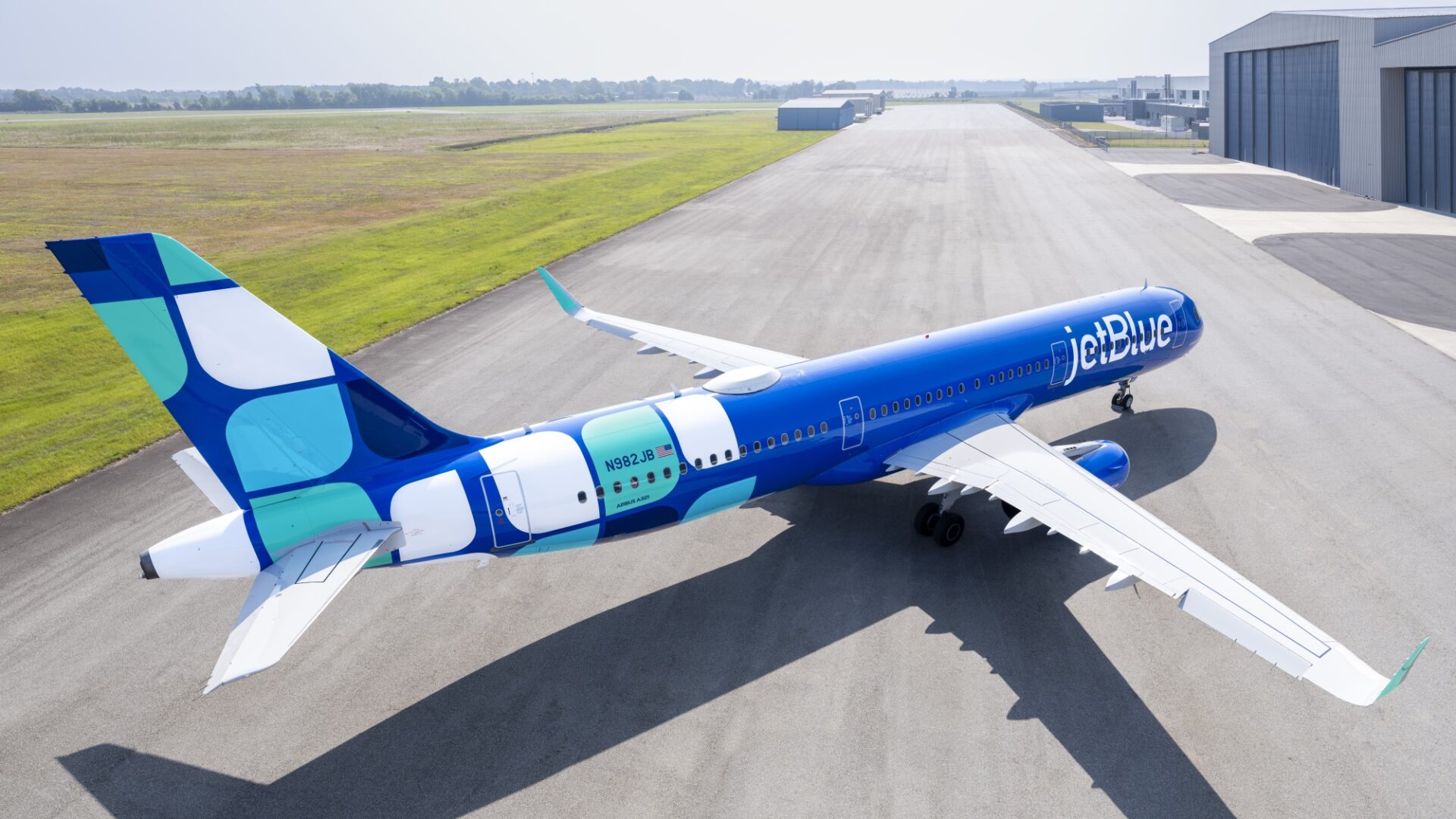JetBlue has struck a deal with Amazon to bring its upcoming satellite internet service, Project Kuiper, on board. The airline will use Kuiper to power its Fly-Fi in-flight Wi-Fi, making JetBlue the first airline to sign up for Amazon’s low Earth orbit satellite network. Installation is expected to start on part of its fleet in 2027, with the goal of enhancing the free Wi-Fi that passengers have come to expect.
The partnership also places Amazon directly in competition with SpaceX’s Starlink, which already has agreements with carriers such as Hawaiian Airlines and United. Amazon’s Kuiper system has recently clocked download speeds of over 1 Gbps in testing, fast enough to handle demanding tasks like 4K streaming without the usual mid-air frustrations.
Key Takeaways
- JetBlue is the first airline to adopt Amazon’s Project Kuiper for in-flight Wi-Fi.
- The service will begin rolling out to aircraft in 2027.
- Kuiper uses a low Earth orbit satellite network, which enables faster speeds and lower latency than traditional systems.
- The aim is to deliver gigabit-level connectivity so passengers can stream, video chat, or work without compromise.
- Amazon now finds itself in a head-to-head race with SpaceX’s Starlink in the aviation connectivity market.
A Look at Project Kuiper and its Aviation Plans
Project Kuiper is Amazon’s ambitious plan to deploy more than 3,200 low Earth orbit satellites, creating a global broadband network. Unlike geostationary satellites that sit about 36,000 kilometers away, Kuiper satellites orbit much closer, around 590 to 630 kilometers from Earth. That shorter distance is critical because it reduces latency, or the time it takes data to travel back and forth. In practice, that means activities like streaming or video conferencing feel smoother and far more responsive.
Amazon has already launched over 100 satellites and is ramping up deployment quickly. To reach its goals, it has lined up several launch partners, including ULA, SpaceX, and Jeff Bezos’ Blue Origin. Recently, Amazon even signed an agreement with Airbus to bring Kuiper connectivity into its catalog of aircraft, which suggests a bigger aviation push is underway.
For planes specifically, Amazon has developed a compact phased-array antenna that manages both transmitting and receiving signals in one piece of hardware. This design helps cut down on size and weight, a key concern in aviation. While a standard Kuiper dish for homes is expected to hit speeds up to 400 Mbps, Amazon’s enterprise terminals have shown performance above 1 Gbps, and that’s the level JetBlue hopes to offer passengers.
What This Means for In-Flight Connectivity
JetBlue has been ahead of the curve with in-flight Wi-Fi, having offered free internet since 2013 through its partnership with Viasat’s geostationary satellites. That service has been a major selling point for the airline, though speeds can fluctuate. By teaming up with Amazon, JetBlue plans to test a hybrid approach that blends GEO and LEO satellites, essentially creating a multi-orbit solution for more consistent service.
For passengers, the benefits could be game-changing. Being able to stream a show in high resolution, hop into a video meeting, or use cloud-based apps while cruising at 35,000 feet would start to feel a lot closer to what people get at home. It’s a step toward making in-flight connectivity something travelers can actually rely on rather than tolerate.
This partnership also raises the stakes in the growing battle for airline internet dominance. Starlink has a head start and several carriers already lined up, but Amazon’s entry through JetBlue is a statement that it intends to compete seriously. Rollout begins in 2027, and more details about which aircraft will get Kuiper first are expected as the project develops.
Frequently Asked Questions
Q1. What is Project Kuiper?
A1. Project Kuiper is Amazon’s satellite constellation, a network of thousands of satellites in low Earth orbit designed to provide fast, affordable broadband internet to people and businesses worldwide, including those in remote areas.
Q2. What is the difference between LEO and GEO satellites?
A2. LEO, or low Earth orbit, satellites are much closer to Earth than geostationary (GEO) satellites. This shorter distance means data travels faster, leading to lower latency and better performance for activities like video calls and online gaming.
Q3. How fast is the internet from Project Kuiper?
A3. Amazon has shown that its high-end enterprise terminal can deliver download speeds of over 1 Gbps in tests. The standard home terminal is designed to provide up to 400 Mbps. Actual speeds will vary based on network load and other factors.
Q4. When will Project Kuiper service be available on JetBlue flights?
A4. JetBlue plans to begin rolling out the Project Kuiper system on a portion of its aircraft starting in 2027. A phased installation will follow.





